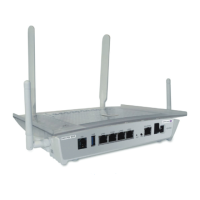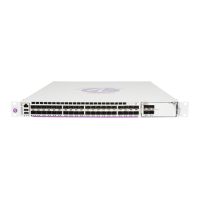Warnings and Notes
222 7750 SR-a4 and SR-a8 Installation Guide
Warnings and Notes
Danger:
• Fiber-optic equipment can emit laser or infrared light that can injure your eyes. Never
look into an optical fiber or connector port. Always assume that fiber-optic cables are
connected to a light source.
• CFP and QSFP+ pluggable optic modules are very hot while in use. Touch only the
captive screws when removing the module. Allow the module to cool before further
handling.
Warning:
• Make sure that the safety cap on the transceiver is inserted while you install or remove
the SFP, SFP+, CSFP, CFP, or QSFP+ transceivers. Only remove the safety cap when
you are ready to attach network cables.
• Always replace the dust cover when the SFP, SFP+, CSFP, CFP, or QSFP is removed.
• Use only approved small form factor pluggable (SFP) and compact form factor
pluggable (CFP) fiber-optic devices in MDA-a ports.
• Before using the optics, verify that the optical path is in compliance with the parameters
of the optical components. In particular, verify any minimum attenuation requirements
for the optics. If minimum attenuation requirements are not met, the optical receiver
components may be permanently damaged.
• Electrostatic discharge (ESD) damage can occur if router components, including SFP,
SFP+, CSFP, CFP, and QSFP+ transceivers are mishandled. Always wear an ESD-
preventive wrist or ankle strap and always connect an ESD strap to the grounding plug
on the front of the chassis.
Caution:
• Always place router components on an antistatic surface.
• Avoid bending fiber-optic cable beyond its minimum bend radius.
• Do not exceed the recommended minimum bend radius for fiber-optic cables. AT&T TP-
76450 specifies 1.0 in. (25.4 mm) inside radius for single fibers.
Note:
• Discard SFP, SFP+, CSFP, CFP, and QSFP+ transceivers according to all local laws
and regulations.
• SFP, SFP+, CSFP, CFP, and QSFP+ transceivers can be installed and replaced
without disabling the interfaces.
• SFP, SFP+, CSFP, CFP, and QSFP+ transceivers are keyed to prevent incorrect
insertion.

